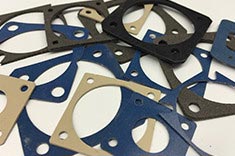EMI Shielding Products
- Custom Gasket Fabrication
- Connector Gaskets
- Bonded O Ring
- Custom Gaskets
- Conduct-O-Knit Knitted Wire Mesh
- Conduct-O-Seal Combo Gasket
- Conduct-O-Elastomer
- Conduct-O-Seal Oriented Wire in Silicone Gasket Material
- Conduct-O-Mesh Tape
- Conduct-O-Foam
- Conduct-O-Bond
- Optical Filters For Electronic Displays
- Shielded Vent Panels
- 300 Series
What are the Differences Between Radiated and Conducted EMI
EMI, or electromagnetic interference, is a common problem that must be directly addressed. When there is adequate EMI shielding, it is often the case that EMI creates degradation within electronic devices and potentially causes them to stop working altogether. In the medical industry, EMI can jeopardize health In industrial industries, Increasing downtime and work stoppages. EMI is the leading cause of data loss and electrical disasters in business. Although all EMI is harmful, it is essential to recognize the difference between the two main types of EMI: conducted and radiated.

Radiated EMI does not require physical contact because the waves travel through the air. This emission type occurs when electronic devices produce electromagnetic energy (in an electrical field). Damage from radiated EMI occurs through induction. The radiated omissions then spread outward and can even potentially travel long distances. This is one reason why EMI shielding it’s so important.
Conducted EMI occurs when interference is transferred from a source to a receiver. This must occur along a direct route to be considered conducted EMI. Conducted EMI only occurs when the physical conduction route transfers electromagnetic emissions to connected equipment. For instance, power cables are a common path for conducted emissions. It can also occur with electrical interconnection cabling and parasitic capacitance.
Custom EMI shielding solutions are necessary to ensure that you are protected based on the specific needs of applications, environments, and design. Regardless of how you do it, make sure you protect your electronic devices from EMI.
Related Reading about EMI RFI Shielding
- What Are the Most Common Options for Shielding EMI Materials?EMI shielding can more reliably ensure effective electrical conductivity. New, conductive silicones are reliable and cost-effective.
- What is the Difference Between Narrow-band and Broadband Electromagnetic Interference?
- Understanding how EMI Shielding Works



